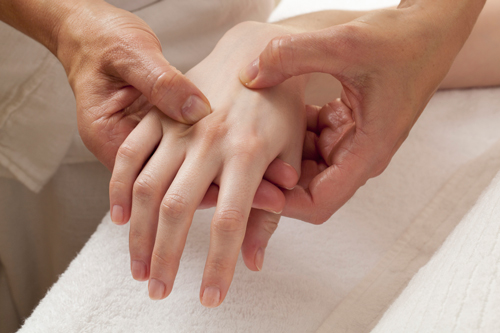
Getting a Grip on Extensor Tendon Repair
When you think about your hands and all the things they allow you to do every day — from picking up a coffee cup to typing on a keyboard — you might not realize how much you depend on tiny, powerful structures called extensor tendons.
Extensor tendons allow you to extend your wrist and open your hand. They run along the forearm to the wrist and then along the back of the hand.
Because these tendons have little protection, they are quite vulnerable to injury.
How Do Extensor Tendon Injuries Happen?
Injuries to extensor tendons can occur in a variety of ways, often unexpectedly.
Everyday activities can sometimes lead to accidents that cause serious damage to these essential tendons.
You could injure your extensor tendons in several ways:
- lacerations (for example, if your hand goes through a glass window)
- blunt trauma or crush injuries
- deep burns
- animal bites
- disease
Extensor Tendon Injury and Rheumatoid Arthritis
For those with rheumatoid arthritis, the situation can be more complex.
- This autoimmune disease can cause the body’s immune system to attack its own tissues, including the extensor tendons.
- In people with rheumatoid arthritis, these tendons can erode and rupture at the wrist.
- And someone with ruptured extensor tendons will lose movement in the fingers.
If this happens, daily tasks that were once simple, like holding a cup or brushing your teeth, can become nearly impossible.
What Happens When an Extensor Tendon is Injured?
When an extensor tendon is damaged or severed, you might find that you’re unable to straighten your fingers or thumb, or perhaps you can’t lift your hand or wrist as you normally would.
This can be painful, frustrating, and limiting, especially if you use your hands frequently for work, hobbies, or daily tasks.
You may notice other symptoms as well:
- Swelling or Bruising: This can occur on the back of the hand or forearm, where the extensor tendons are located.
- Tenderness: The area may feel sore to the touch.
- Numbness or Tingling: If nerves around the tendon are also affected, you might experience numbness or tingling.
- Dropping Objects: You might find it difficult to grip or hold onto objects, leading to frequent dropping.
Treating Extensor Tendon Injuries
Most extensor tendon ruptures must be surgically repaired, but surgery alone will not restore the hand to the fullest function possible.
This is because your hand and wrist are complex structures made up of bones, muscles, nerves, and tendons that work together to perform intricate movements.
After surgery, the repaired tendons need time to heal properly and regain their strength.
To regain dexterity, it is essential that surgery be followed by several months of physical therapy.
The Role of Physical Therapy in Your Recovery
Because the wrist and hand are complex structures, each extensor tendon repair requires a slightly different approach to rehabilitation.
This depends on several factors:
- Where the rupture occurred: The location of the injury affects which movements are most impacted and which areas need the most attention during therapy.
- How many tendons were injured: If more than one tendon is injured, this can affect the complexity of the surgery and rehabilitation.
- Other Injuries: If there are other surrounding injuries, such as broken bones, these will also influence your therapy and recovery plan.
– Why Physical Therapy Matters
Physical therapy plays a critical role in ensuring that the tendon heals properly and that you regain as much function as possible.
During your therapy sessions, a physical therapist will guide you through a series of exercises and activities designed to:
- Prevent Scar Tissue Formation: Scar tissue can form between the tendon and the bone during healing. If not managed correctly, this scar tissue can limit the gliding motion of the tendon, making it difficult for you to open and close your hand smoothly.
- Restore Range of Motion (ROM): Therapy will focus on improving the range of motion of your fingers, hand, and wrist, ensuring that you can move through the full spectrum of motion without pain or restriction.
- Strengthen Muscles: Strengthening the muscles around the repaired tendon is crucial to support the healing tendon and improve overall hand function.
– Balancing Exercise and Recovery
Care must be taken to balance exercises that increase ROM against putting too much tension on the repair site before it is fully healed.
Your physical therapist will carefully guide you through exercises that are appropriate for your stage of healing.
Did you know you have Direct Access* to Physical Therapy? No referral, no problem!
What to Expect from Physical Therapy
Your physical therapy journey will likely start soon after your surgery.
At first, physical therapy might feel slow and careful, focusing mainly on gentle movements to maintain flexibility and prevent stiffness.
Over time, as the tendon continues to heal, your physical therapist will introduce more challenging exercises designed to build strength, coordination, and endurance.
Some common components of your therapy program might include:
- Stretching Exercises: Gentle stretches will help maintain flexibility in your hand and fingers.
- Strengthening Exercises: These exercises will gradually become more intense as your hand becomes stronger.
- Manual Therapy: Hands-on techniques that your therapist might use to help mobilize tissues and improve circulation.
- Home Exercise Program: Your therapist will likely give you exercises to do at home to supplement your in-clinic sessions.
The Importance of Consistency
To achieve the best results, it’s crucial to be consistent with both your in-clinic sessions and your home exercise program.
Remember, the road to recovery is often a marathon, not a sprint.
It requires dedication, patience, and persistence, but with the right approach, you can make significant progress over time.
Final Thoughts
Our physical therapists at The Jackson Clinics can work with your doctor to develop a physical therapy and home exercise program appropriate to your injury.
We are here to help you every step of the way and help you get back to doing what you love as soon as possible.
The Jackson Clinics serves 18 locations throughout Northern Virginia.
Find one near you: https://thejacksonclinics.com/locations/
















